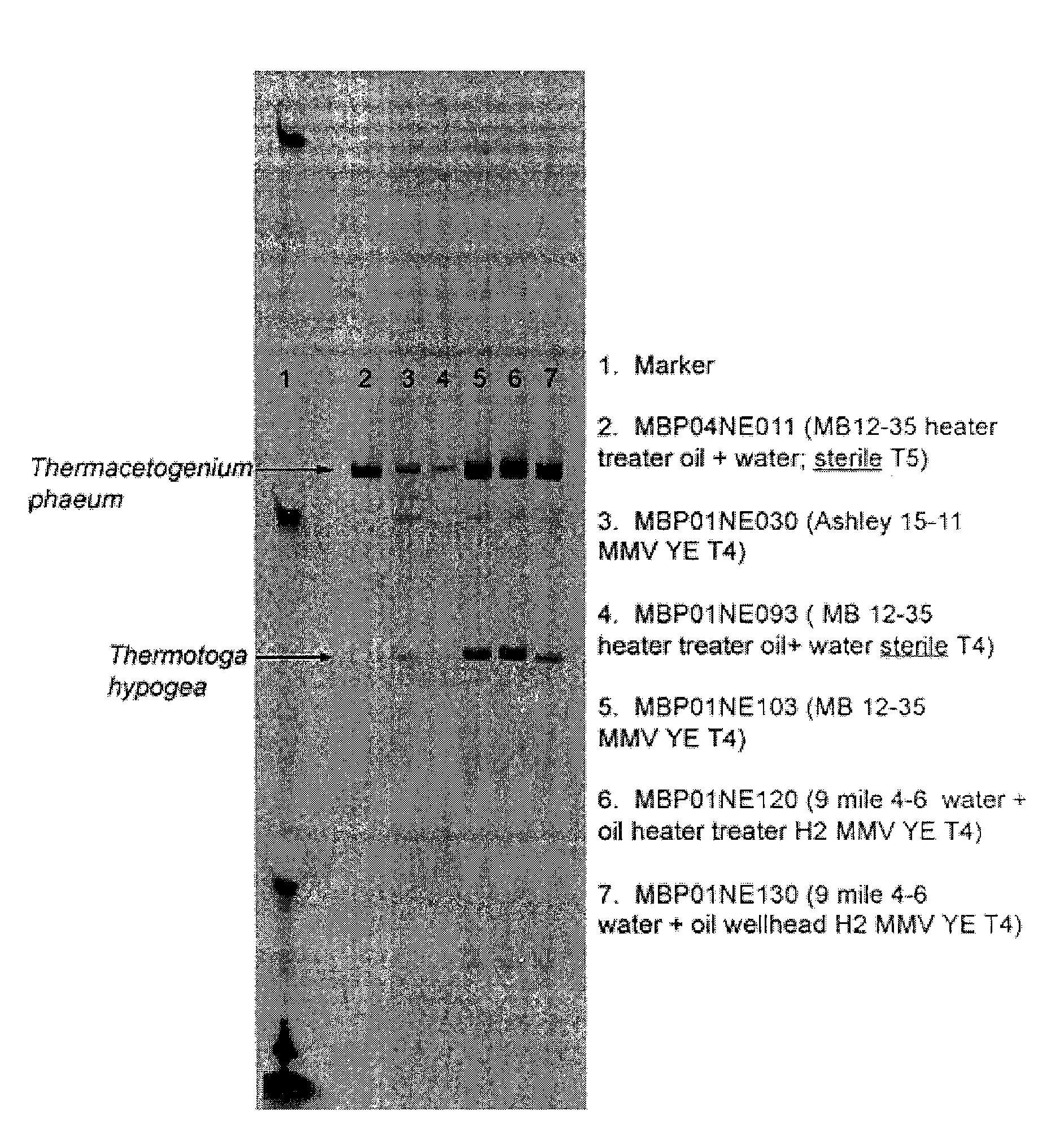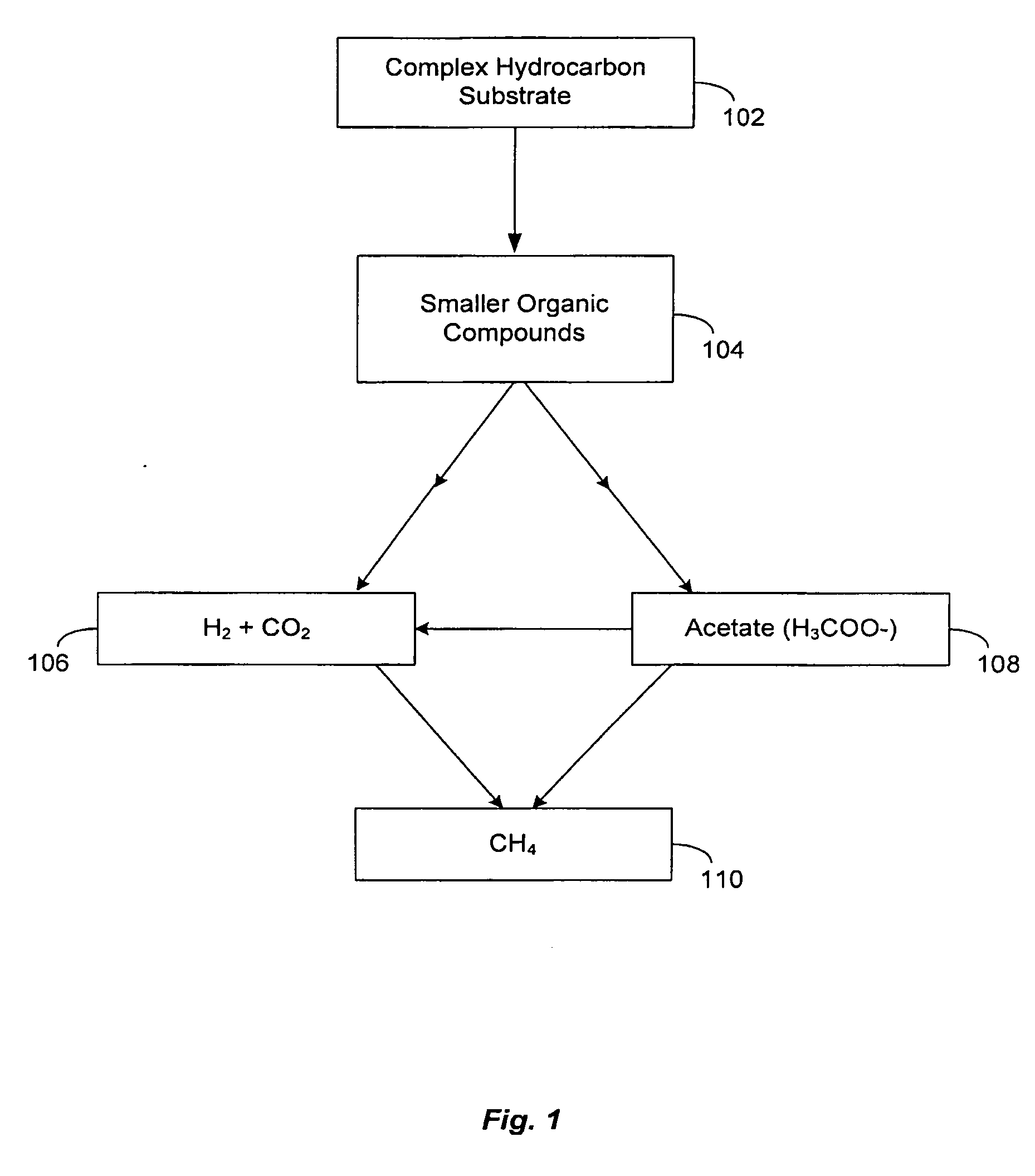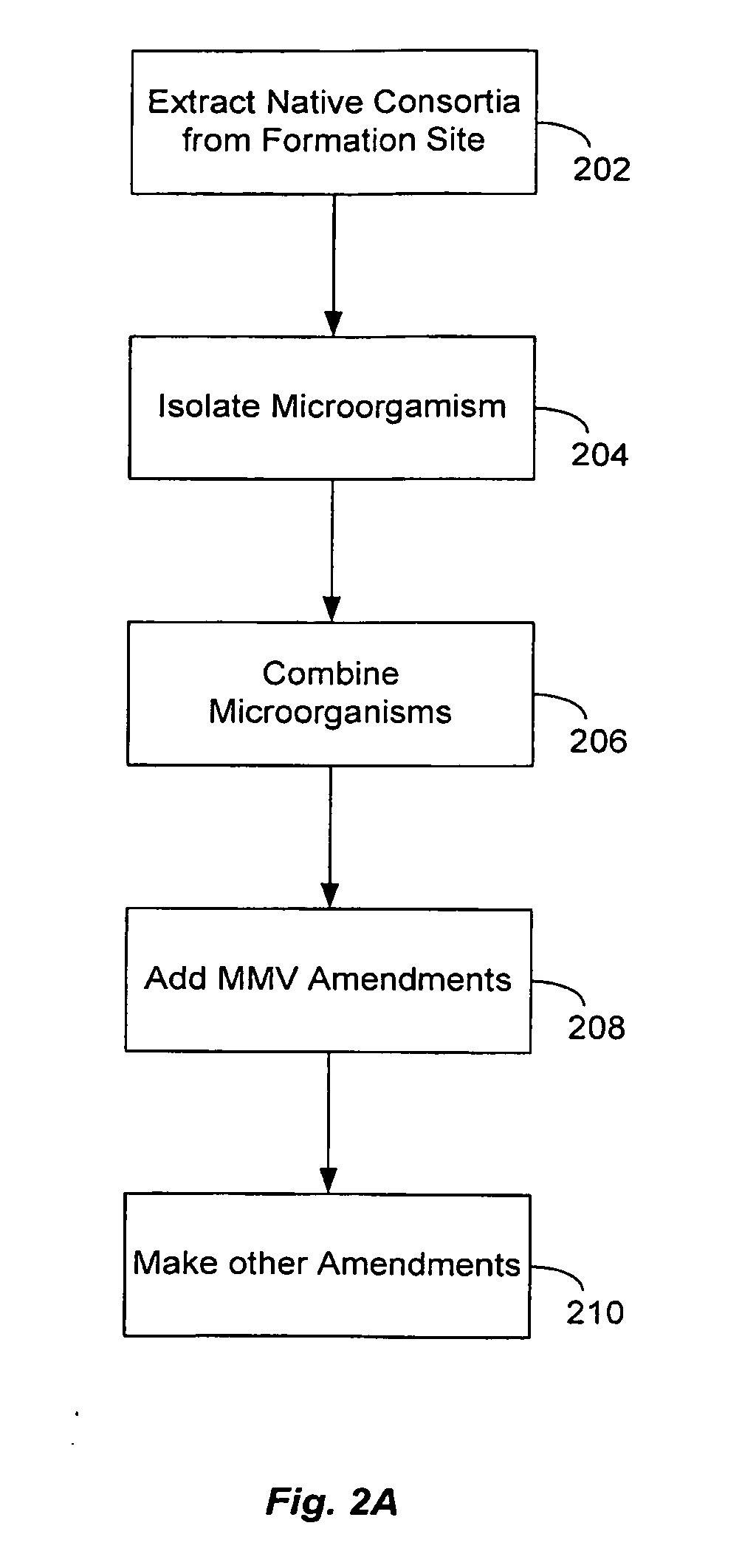Thermacetogenium phaeum consortium for the production of materials with enhanced hydrogen content
a technology of thermacetogenium phaeum and hydrogen content, which is applied in the direction of microorganisms, biochemical equipment and processes, waste based fuel, etc., can solve the problems of serious safety concerns, accidents and sabotage of lng infrastructure, and the cost of condensing and transporting lng is significant, so as to increase the population of thermacetogenium phaeum and increase the production of materials. , the effect o
- Summary
- Abstract
- Description
- Claims
- Application Information
AI Technical Summary
Benefits of technology
Problems solved by technology
Method used
Image
Examples
Embodiment Construction
[0021]Thermacetogenium phaeum (“T. phaeum”) is identified as a “first bite” microorganism that can metabolize part of a complex hydrocarbon substrate such as crude oil into a fermentation end product such as acetate (e.g., acetic acid) or formate (e.g., formic acid). Thus, T. phaeum appears to play dual roles in a metabolic process of converting complex hydrocarbons to methane: The microorganism appears to be responsible for the hydrolytic fermentation of the starting hydrocarbon to an intermediate, and also for converting that intermediate into acetate. After this, all that remains is to convert the acetate into methane with a methanogen. The acetate can be converted directly to methane. Alternatively, a syntrophic microorganism can convert the acetate to hydrogen gas and carbon dioxide, which is utilized by hydrogen utilizing methanogens. Thus, a process for metabolizing a complex hydrocarbon into methane has been discovered that requires only two or three species of anaerobic mic...
PUM
| Property | Measurement | Unit |
|---|---|---|
| pressure | aaaaa | aaaaa |
| temperature | aaaaa | aaaaa |
| temperatures | aaaaa | aaaaa |
Abstract
Description
Claims
Application Information
 Login to View More
Login to View More - R&D
- Intellectual Property
- Life Sciences
- Materials
- Tech Scout
- Unparalleled Data Quality
- Higher Quality Content
- 60% Fewer Hallucinations
Browse by: Latest US Patents, China's latest patents, Technical Efficacy Thesaurus, Application Domain, Technology Topic, Popular Technical Reports.
© 2025 PatSnap. All rights reserved.Legal|Privacy policy|Modern Slavery Act Transparency Statement|Sitemap|About US| Contact US: help@patsnap.com



